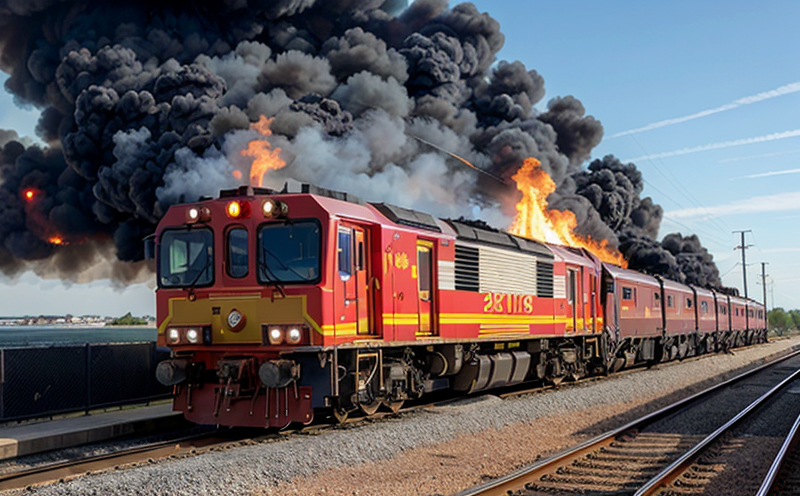Fire Safety Testing of Marine Cabin Furniture
The fire safety testing of marine cabin furniture is a critical component in ensuring maritime safety and compliance with international regulations. In the context of marine environments, where confined spaces are common, even minor incidents can have severe consequences. Therefore, ensuring that all materials used meet stringent fire safety standards is paramount.
Marine cabin furniture must withstand rigorous testing to ensure it meets both statutory and voluntary standards set by organizations like the International Maritime Organization (IMO) and individual flag states. These tests are designed to evaluate how well a material or product can resist ignition, spread of flame, and produce toxic smoke in case of fire.
For instance, materials such as fabrics used for upholstery or textiles utilized in curtains must be tested against standards like ISO 16950 series. These tests assess the flammability characteristics under various conditions including exposed to open flames, heated surfaces, and electrical sparks. The results of these tests are crucial not only for compliance but also for enhancing passenger safety.
In addition to evaluating materials, complete assemblies like cushions or armchairs may undergo tests that simulate real-world scenarios such as being subjected to high temperatures generated by a fire source. This helps in understanding the overall performance of an assembly rather than just individual components. Compliance with these standards is mandatory for manufacturers aiming to sell their products within the European Union and other international markets.
The process begins with thorough specimen preparation, which involves selecting representative samples that accurately reflect the intended end use. Specimens are then subjected to different types of ignition sources depending on the specific test being performed. After exposure to fire, the specimens are carefully examined for signs of damage or failure such as melting, charring, or decomposition.
Once testing is complete, detailed reports are generated summarizing all observations and measurements taken during the tests. These documents serve multiple purposes including providing evidence for compliance with regulatory requirements, offering insights into potential improvements in product design, and facilitating informed decision-making by stakeholders involved in specifying materials and selecting suppliers.
Why It Matters
The importance of fire safety testing cannot be overstated when it comes to marine cabin furniture. Given the nature of ships where electrical systems, cooking facilities, and passengers are concentrated in confined spaces, any ignition source can rapidly spread into a full-blown fire. In such environments, rapid detection, suppression, and containment are essential.
- Reduces risk of life-threatening incidents
- Avoids significant financial losses due to property damage
- Promotes safer working conditions for crew members
- Enhances overall passenger confidence and satisfaction
The implementation of robust fire safety measures not only protects lives but also helps in maintaining the integrity of structures aboard ships. By adhering to stringent testing protocols, manufacturers contribute significantly towards building safer vessels capable of withstanding adverse situations without compromising on quality.
Why Choose This Test
- Ensures compliance with international standards and regulations
- Promotes the use of high-quality, durable materials
- Facilitates safer travel experiences for passengers
- Aids in meeting insurance underwriting criteria
Testing marine cabin furniture according to recognized standards guarantees that products perform reliably under challenging conditions. This includes assessing how well they resist ignition, prevent the spread of flames, and minimize smoke production. Compliance with these rigorous tests provides peace of mind knowing that your product has been rigorously evaluated against industry benchmarks.
Furthermore, choosing this type of testing demonstrates a commitment to excellence in manufacturing practices which can be highly beneficial for reputation-building among customers and stakeholders alike. It also opens up opportunities for exporting products internationally where stringent quality controls are enforced.
Quality and Reliability Assurance
- Consistency in performance across batches of product
- Predictable outcomes based on well-defined criteria
- Evidence for regulatory compliance supporting marketing claims
- Reputation enhancement through proven reliability
The consistent application of fire safety testing procedures ensures that every batch produced adheres to the same high standards. This predictability allows manufacturers to confidently market their products as meeting specific performance levels, thereby enhancing customer trust and satisfaction.
From a regulatory perspective, having reliable test results provides substantial evidence for compliance with relevant laws and directives. This can be particularly advantageous when dealing with stringent requirements imposed by various countries or organizations worldwide.





